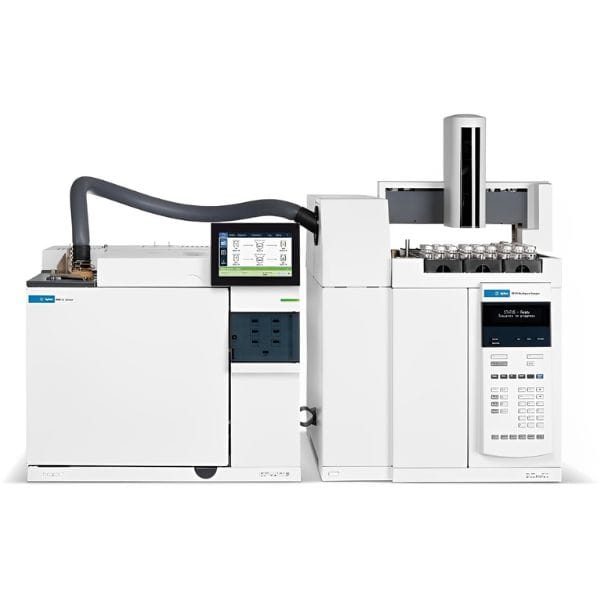Home» Pharmaceutical Analysis» Residual Solvent Determination
Residual Solvent Determination
Residual solvents in pharmaceuticals are defined here as Organic Volatile Impurities (OVIs) that are used or produced in the manufacture of drug substances or excipients, or in the preparation of drug products.
Solvent may sometimes be a critical element in the synthetic process and may not be completely removed by the manufacturing process. Because residual solvents do not provide therapeutic benefit, they should be removed. Solvents such as DMSO, DMF can also play a role in production on Nitrosamine impurities in the final drug product.

Solvents are classified as follows:
| Residual Solvent Classes | Assessment |
| Class 1 (solvents to be avoided) | Known human carcinogens |
| Strongly suspected human carcinogens | |
| Solvents particularly known to have ozone-depleting properties | |
| Class 2 (solvents to be limited) | Nongenotoxic animal carcinogens or possible causative agents of other irreversible toxicity, such as neurotoxicity or teratogenicity |
| Solvents suspected of other significant but reversible toxicities | |
| Class 3 (solvents with low toxic potential) | Solvents with low toxic potential to humans; no health-based exposure limit is needed |
CLL’s Organic Volatile Impurities Services:
CLL provides GMP facilities for residual solvents determination using GC-FID and GC-MS techniques.
Screening & Classification as per USP <467> or Ph. Eur. 2.4.24
- Residual solvents used in synthesis;
- Cleaning solvents;
- Degradation by-products of solvents;
- Residual Solvents in finished product;
| Analytical Method Development (AMD) | With over 75+ developed and validated methods available for various raw materials / excipients, drug formulations & vaccines, CLL has a large database of method available that can be used as a basis for rapid |
| Analytical Method Validation (AMV) | Our dedicated validation team has expertise in rapid validation as per ICH Q2, USP and ANVISA guidelines for complex residual solvent methods including multi-analyte methods. Our AMV team has expertise in developing methods for low boiling point compounds or low-response analytes such as Benzene, Ethylene oxide, Styrene etc. |
| Analytical Method Transfer (AMT) | Direct, indirect as well as collaborative trials are used for transferring methods to client site to ensure that methods give seamless performance at both CLL as well as client site. |
| Quality Control Analysis – Determination by GC-MS or GC-FID | CLL uses both 2D as well as confirmatory analysis by mass spectrometry to identify and quantitate residual solvents. |
| Unknown peak identification by GC-MS (NIST / Wiley library) | For Out of specification (OOS) or Out of trend (OOT) investigations, CLL carries out GC-MS based determination of unknown masses and identification using NIST / Wiley library. |
Sterilization residues
| Residues of sterilization gases, or their by-products are carcinogenic and analytes of concern for regulatory bodies. CLL has expertise in carrying out testing as per its pre-validated methods for Sterilization gas residues in vials, medical devices, packaging containers etc. |
Regulatory References
Residual solvents are referenced in several regulatory guidelines:
• USP 〈467〉, 〈1467〉 for Residual Solvents
• Ph.Eur. 2.2.24 for Residual Solvents.
List of solvents provided in USP with Class Identification
Method Development, Suitability and Validation
Although USP <467> provides the methods to be used, alternative methods can be developed and validated to minimize interference and to meet the limits of detection and quantitation desired. USP <1467> further specifies the acceptance criteria for verification of compendial method for residual solvents, or validation requirements for alternative methods.
At CLL, each validation study considers the specific substance or products solubility profile, boiling point, and interference determination and elimination.
Method validation covers:
- Specificity
- System Suitability
- Solution Stability
- Linearity
- Range
- Limit of Detection
- Limit of Quantitation
- Accuracy with spiking
- Repeatability (System and Method)
- Measurement uncertainty
- Ruggedness over a range of laboratory conditions
- Robustness using small variations in the method.

Turnaround Time
- Quality Control Analysis – 1 week (2/3 Day rush services are available)
- Method Development and Validation – 2-3 weeks.
